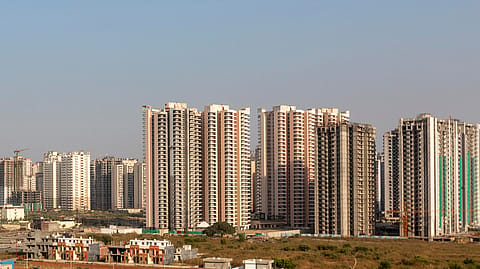Do you know your home loan interest can reduce your tax? Here's how
Maximise your tax savings by choosing the right home loan strategy—self-occupied or rented-out?

On 1 February 2025, as the Finance Minister took the podium to present the Union Budget, Mr Kumar sat in his living room, keenly watching the announcements. Like every salaried individual, he was eager to know if any changes in tax policies could impact his finances.
At 40, with a taxable salary of ₹14.75 lakh, he had structured his investments wisely. But one question loomed: how would his ₹2 lakh home loan interest payment affect his tax liability? Would it be different if the property was self-occupied or rented out?
To determine Mr Kumar's tax incidence for FY 2025-26 (AY 2026-27), considering his salary income of ₹14.75 lakh and interest payment of ₹2 lakh on a home loan, we need to analyse both the old and new tax regimes.
Prabhakar K.S., Founder and CEO of Shree Tax Chambers, is of the opinion that it all boils down to the distinction between self-occupied property and rented-out propert.
"For self-occupied property, as per the new tax rates announced in the Union Budget 2025-26, [a taxpayer] is liable to pay taxes of ₹93,600 under the proposed new regime. Similarly, under the old regime, his tax liability will be ₹1,87,200."
"In the case of rented-out property, he is liable to pay ‘Nil’ taxes under the proposed new regime after claiming rebate and standard deduction. Similarly, under the old regime, his tax liability will be ₹1,87,200," Prabhakar added.
This shows, under the Old Tax Regime, Mr Kumar benefits from a ₹2 lakh home loan interest deduction on a self-occupied property (SOP), reducing his taxable income to ₹12.25 lakh with a tax liability of ₹1.87 lakh.
Recommended Stories
In contrast, under the New Regime, despite losing this deduction, a higher ₹75,000 standard deduction lowers his tax to ₹93,600, making it more beneficial.
Suresh Surana says, "For a let-out property (LOP), rental income increases taxable income, leading to a higher tax liability of ₹2.74 lakh under the old regime, while the new regime, with lower rates and a higher standard deduction, significantly reduces the tax burden to ₹1.06 lakh. Overall, the new regime offers greater tax savings, particularly in the case of rental income, while the old regime is more advantageous for self-occupied homeowners maximizing deductions."